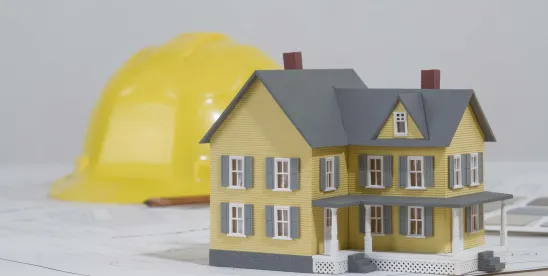The National Association of Home Builders/Wells Fargo Housing Market Index (HMI) released on July 16th increased to 53. That is up four points from the June figure of 49 and represents the first time since January that the index is above 50. In January, the index reached 56 points. The index reports the percentage of home builders that view sales conditions as good rather than poor. After a slow start to the year in home sales resulting from bad weather conditions and higher interest rates, among other factors, the increase in the index above 50 represents an important shift in home builder sentiment. According to National Association of Home Builders (NAHB) Chairman Kevin Kelly, “This is the first time that builder confidence has been above 50 since January and an important sign that it is strengthening as pent-up demand brings more buyers into the marketplace.”
Below is a chart from the HMI that shows the housing market index and new single-family housing starts dating back to 1985. Over the past roughly 30 years, new single-family housing starts and the housing market index have had a very close correlation. However, since January 2012, the housing market index has increased dramatically while new single-family housing starts have increased much less gradually.

The increase in confidence by home builders is attributable to two major factors: pent-up demand resulting from potential buyers delaying home purchases due to fears about the economy, and improving employment conditions. According to NAHB Chief Economist David Crowe, “An improving job market goes hand-in-hand with a rise in builder confidence… As employment increases and those with jobs feel more secure about their own economic situation, they are more likely to feel comfortable about buying a home.” Employers added 288,000 jobs last month, the fifth straight month of gains above 200,000. The national unemployment rate has slid to 6.1 percent, a 5 ½-year low.
In addition to current sales conditions, the survey of home builders for the HMI also asks builders to rate sales expectations over the next six months and traffic of prospective buyers. Scores from each component are then used to calculate a seasonally adjusted index. Below is a chart released by the NAHB that shows the various categories of the HMI dating back to July 2013, on both a national and regional basis. The index reflecting sales expectations over the next 6 months rose 6 points to 64, and the index regarding traffic of prospective buyers increased 3 points to 39. The 3-month moving average was up in all four regions, with the Northeast and Midwest posting a 1-point and 2-point gain to 35 and 48, respectively. The West registered a 5-point gain to 52 while the South rose two points to 51.

All in all, the news from the HMI report is very positive for the home building market. The key questions are whether the positive sentiment will translate to an increase in new single-family housing starts, and whether the pent-up demand and increase in traffic of buyers looking at new single-family homes will result in actual sales.




 />i
/>i

